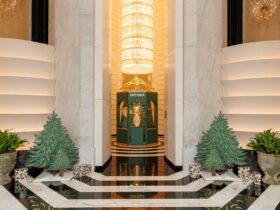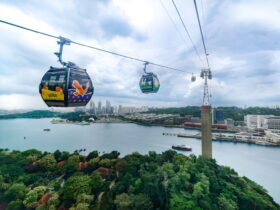Get ready to be awestruck by the critical power of art
Photos: Weekender

Art has long been used politically to move people to social change. But many of the best-known examples are works by Western artists in response to social issues in the Western world. Asian artworks are often overlooked or forgotten in global discussions about art and social activism.
Enter Awakenings, the latest exhibition at National Gallery Singapore.
Known in full as Awakenings: Art in Society in Asia 1960s-1990s, the exhibition shines a spotlight on works by Asian artists who began to question the socio-political conventions during the turbulent post-colonial and early independence period. Opening on 14 June, the exhibition showcases a range of radical and experimental practices the artists took, employing art to express their identities and their frustrations with oppressive power structures. A main aim of the exhibition is to re-position Asia as a central part in the narrative of global art activism.

Over four years, National Gallery Singapore collaborated with the Museum of Modern Art Tokyo, the Museum of Modern and Contemporary Art Korea and the Japan Foundation Asia Center to put together the exhibition. It features over 140 thought-provoking artworks by more than 100 artists from 12 countries in Asia.
What also makes Awakenings unique and interesting is the curatorial structure: the exhibition is organised by themes – Questioning Structures, Artists and the City, and New Solidarities – rather than chronology or country. This organisational structure deliberately draws transnational connections across Asia, highlighting how not only our political conditions but also our artistic movements have influenced each other.
This way, without a linear order to viewing the works, visitors can explore the exhibition halls in any way they like and observe the interconnectedness of the works in dialogue with one another.

Even though they were created many decades ago, the works still raise questions and comment on issues of social inequality that are still relevant today. A great number of the works displayed at Awakenings zoom in on urbanisation and consumer capitalism – the above painting entitled Labyrinth by Dede Eri Supria reveals how the rapid industrialisation of Indonesia leads to both urban poverty and environmental destruction, two problems that continue to plague many Southeast Asian countries today.
As we went through the exhibition, we quickly observed that there are many videos and performance art captured on video that also challenge industrialisation. They are some really simple yet subversive works that employ the mass media that were rising at the time (i.e. the television) to critique the conditions that allow them to rise – modernisation.

Our personal favourite section is the last one, New Solidarities. It showcases artworks that sprung out during the birth of radical student protest movements and critical artist collectives. From these artworks, we could feel the strength of solidarity the artists found and drew on to fight for better lives. Many of the works form dialogues with each other, too.
One kind of the collective movements highlighted as part of New Solidarities is the feminist artist movements. A day after previewing the exhibition, we are still thinking about the above sculpture, Thinking Nude by Julie Lluch, co-founder of a Filipino women artists’ collective. It is a powerful work that makes us rethink how we see beauty and reclaims the female body from the objectifying male gaze.

Several works by Singapore artists are also featured in the exhibition. They include woodcuts – a form that gained prominence during the social realist art movement in 1950s Singapore – by Lim Yew Kuan and Choo Keng Kwang.

Another experimental work that grabbed our attention is Reptiles, an installation by China-born and French-based artist Huang Yong Ping that is spread out across a large space of the exhibition room. Huang washed textbooks and newspapers from both China and France in three washing machines (which is included in the installation), and lays the paper pulp out in auspicious Chinese tomb-like shapes. The massive size and seemingly haphazard construction of the installation make us stop and look at it, and ponder how the East and the West may take on new connections, if mashed into indistinguishable pulp.

Finally, another work visitors should look out for is F.X. Harsono’s installation What Would You Do If These Crackers Were Real Pistols? The pile of pistol-shaped pink crackers comes accompanied by a desk and notebook for viewers to actually respond to the question posed in the work’s title. It’s a participatory artwork that involves us in not just thinking, but also doing something about the intervention of violence in our everyday lives.
Awakenings: Art in Society in Asia 1960s-1990s official websitewill open on 14 June 2019. Entry is $15 for Singaporeans and PRs, and $25 for foreign visitors. Visit the for tickets and more information.
ADVERTISEMENTS










Leave a Reply